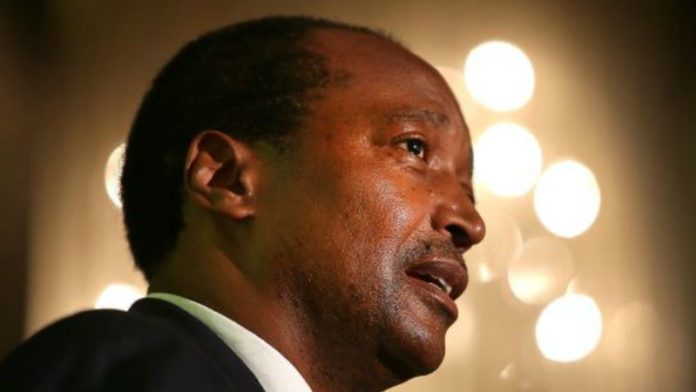
IMPORTANT changes may be afoot at African Rainbow Minerals (ARM) which appears to be weighing up existential questions over structure and strategy.
Typically, investment companies tend to attract a discount to net asset value because they have only partial exposure to cash flows or no management control. Pallinghurst Resources suffered this problem along with Mvelaphanda Resources before it.
The specific issue with ARM is whether its platinum group metals (PGMs) business, ARMPlatinum could be a separately-listed – a discussion the company has had for the past seven years, according to the group’s executive chairman, Patrice Motsepe who spoke on the topic at the firm’s year-end results announcement in early September. What’s different this time, however, is that the debate occupied air time during the group’s full year results announcement.
According to RMB Morgan Stanley analysts, Brian Morgan, Christopher Nicholson and Jared Hoover the public nature of the discussion “… could increase shareholder pressure to address the discount”.
Tim Clark, an analyst for Standard Bank Group Securities also believed that the public nature of the discussion appears to signal intent. Normally, it’s Motsepe who airs a ‘quo vadis’ speech as a results announcement curtain-raiser. Now, several of the executives are taking up the discussion about how ARM might evolve, observed Clark. It was a noticeable change.
If ARM is to restructure its platinum business, it would have to be satisfied the assets it owns could be self standing. Its investments consist of a 55% stake in Two Rivers (with Impala Platinum as the 45% joint venture partner) and a 41.5% stake in Modikwa, a mine 51% controlled by Anglo American Platinum (Amplats).
Two Rivers has generated an estimated R15bn in free cash flow over time and is, therefore, a success. But it is undergoing extension and expansion which won’t be completed until 2024. Modikwa has been a marginal operation over the past 10 years, says RMB Morgan Stanley. It has printed three EBITDA losses between 2015 and 2017. It, too, is being expanded which should help lower unit costs.
The outcome is a mixed bag of profitable and marginal mines that may require supplementation with merger and acquisition activity. The question is whether ARM has the will and nous to build its PGM portfolio?
ARM’s executives were quizzed on the subject of M&A, especially as some R15bn in cash has been set aside. The responses were non-committal but it’s thought Motsepe might be taking some serious advice from long-term banking partner, JP Morgan on the matter.
In the end, Motsepe decides where ARM goes as he controls just over 50% of ARM’s shares, along with the BEE partners. That may pose a problem. “Psychologically, it’s a different role for Motsepe to be the acquirer,” a market source told Miningmx.
ARM was created in 2003 following the merger of its gold assets with Anglovaal, the Menell/Hersov diversified mining group. It has, since then, operated somewhat conservatively as an investment group. Its board is cautious although it could be due a shake up as a replacement is being sought for Mike Schmidt, ARM’s CEO.
Troubled waters
When ARM has embarked on corporate activity, it hasn’t tended to be a success. In 2017, it sold its $200m investment in Lubambe, a copper mine held in joint venture with Brazilian mining group, Vale, for $97m. It also sold its 50% stake in Dwarsrivier, a chrome mine, in 2015 for R450m to Assore. Given the price peaks achieved by the metal in recent years, the selling price seems highly favourable to Assore.
Interestingly, the question regarding ARM’s future began not as one of expansion but rather whether it would take the lead of its bulk minerals joint venture partner, Assore, by delisting from the JSE. The point being that analysts first questioned the role of ARM as a public company rather than whether it could expand its public offering.










